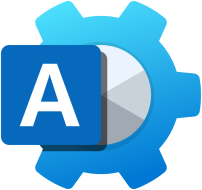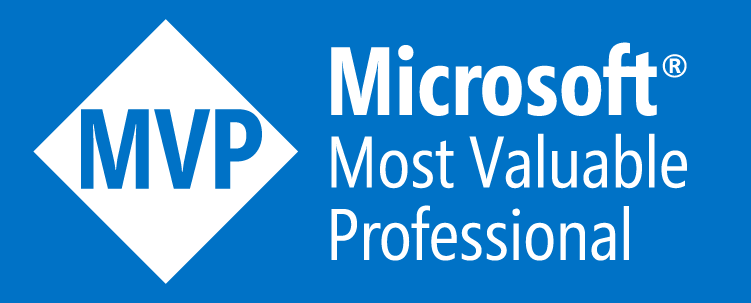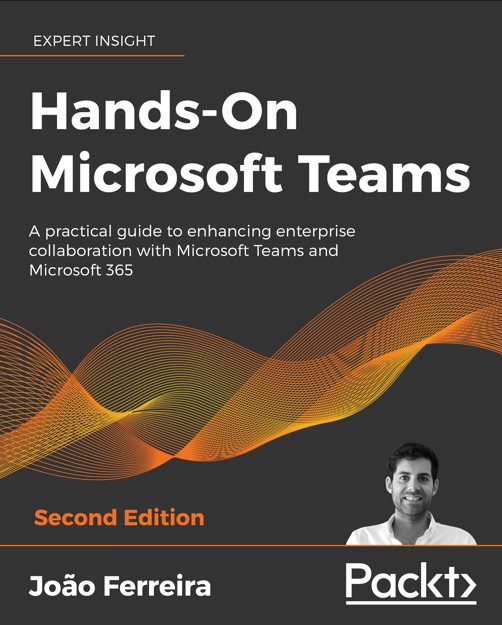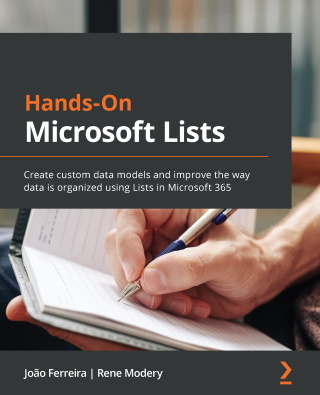What’s new for Microsoft Teams – October 2025
Ocotber was packed with updates across every corner of the platform. My top highlight is the new image search capability: now you can search for images by message content, people, or where they were shared. Results appear as you type, with filters and a dedicated Images tab for quick exploration—all from the search bar.
Another big step forward is Teams Channels in Context IQ prompts, making suggestions smarter and more connected. And the feature I welcome with open arms, finally, Apps in Private Channels. I’ve never understood why this wasn’t possible from day one, so this change is long overdue.
Beyond these, there’s much more to discover in the full article—whether you’re interested in new features for devices, meetings, or chats, Microsoft is updating Teams on all fronts.

OCT
1
Starting late October 2025, Teams Admin Center will show expanded security and compliance data (e.g., SOC 2, ISO 27001, GDPR) for more apps, including those not Microsoft 365 certified, sourced from Microsoft Defender for Cloud Apps. This feature is enabled by default with no user impact.
Microsoft Teams Admin Center will add trust-based filters for app reviews, allowing admins to filter apps by security and compliance standards like SOC 2, ISO 27001, HIPAA, and GDPR. This feature, rolling out October 2025, streamlines app evaluation without changing app enablement behavior.
Microsoft Teams will let users open channels in separate windows for better multitasking, rolling out worldwide from late October to November 2025. This feature is enabled by default for all desktop users, requires no admin action, and does not affect existing functionality or policies.

OCT
2
With a Teams Room on Windows system, both attendees and presenters for Teams Town Hall and Webinars can now simultaneously enjoy unique experiences in the same room. This new feature sets the in-room viewing experience on the front of room display to attendee view by default so presenter-specific features, such as the green room and backroom chat, or off-stage presenters are hidden. Presenters in the room can still see their view on the console and manage everything smoothly without distracting the audience.
Search for images by message content, people, or where they were shared. See results as you type, filter to show only images, or explore them in the dedicated Images tab — all from the search bar.
Admins now have visibility and insight for voice and facial profile enrollments through a dashboard in the Teams Admin Center (TAC). Voice and face profiles are critical for supporting AI-enhanced meeting experiences for users across the organization. The dashboard provides metrics on enrollments over time.
Microsoft Teams now allows users to select and change their microphone, speaker, or headset directly on the meeting join screen across desktop and web clients. This feature is on by default, requires no admin setup, and aims to simplify audio setup before joining meetings.
Microsoft Teams will require explicit consent before recording or transcribing 1:1 PSTN or VoIP calls, enhancing privacy and compliance. This feature, off by default, can be enabled by admins and applies to desktop apps starting November 2025. Consent prompts disable participant media until granted.
Starting late October to November 2025, Microsoft will require admin consent for third-party apps accessing Exchange and Teams content via Microsoft-managed default consent policy. This enhances security by restricting user consent, affecting new app permissions but not existing approved apps. Admins should review app access and configure consent workflows accordingly.
OCT
3
When critical issues impact room functionality, users see a banner notification on both the front-of-room display and console in Teams Rooms on Windows. Room health signals help get issues resolved quickly and ensure productive meetings. Available with Teams Rooms Pro.
Starting mid-October 2025, Microsoft Teams admin center will display risk ratings for each app permission and an overall privilege level on the App details page. This helps admins assess data access risks without changing app enablement or blocking behavior. No action is required.
OCT
6
You can now open channels in a separate window to stay on top of multiple conversations at once.
Microsoft 365 Copilot will integrate Teams channels into Context IQ prompts, allowing users to search and insert relevant channel data when writing prompts. This feature, enabled by default, rolls out worldwide from mid to late October 2025, requiring no admin action but user notification is recommended.

OCT
7
Microsoft is retiring the UKG and Blue Yonder managed connectors in Teams Shifts on November 14, 2025. Organizations must transition to partner apps like UKG Flow or custom integrations before then. Admins should plan with their Microsoft account team and update documentation accordingly.
Microsoft Teams will support emojis in custom section names starting November 2025 for Desktop and Web, with Mobile support later. This feature, enabled by default without admin changes, helps users personalize and organize sections visually. No preparation is required, but communication and documentation updates are suggested.

OCT
8
In addition to Teams Cast and HDMI ingest; you are able to share wirelessly using Miracast with Teams Rooms on Windows devices including touch boards. Available in Teams Rooms Pro.
Microsoft Teams will add a default-enabled search bar in the Settings pane by November 2025, allowing users to quickly find settings by category, section, or control names. No admin action is needed. Telemetry data on search usage will be collected without personal content.

OCT
9
Starting October 2025, Teams will respect hidden user attributes like ShowInAddressList without needing Scope Search, aligning with Outlook and Exchange. Admins should review and update attribute settings, disable Scope Search if only used for hiding users, and inform support teams accordingly.
Microsoft Teams now supports apps in Shared Channels, enabling bots, tabs, and message extensions for richer collaboration. Apps must be added per channel with new governance controls. Rollout starts October 2025. Admins and developers should update policies and app manifests for compatibility. Private Channel support will follow.
As of August 2025, Power Automate flows and Agent flows (Copilot Studio) with HTTP triggers or Teams Webhook triggers that have logic.azure.com in the URL moved to a new URL as a part of a critical infrastructure upgrade to improve execution speed and provide new features.
OCT
10
Microsoft Graph beta now offers Teams administration APIs for user configuration, number management, and policy assignment. These enable automation and integration for Teams management, accessible with delegated or application permissions in commercial environments. Admins can begin exploring these APIs and ensure proper permission scopes.
OCT
13
Within the Teams Settings app, we are now allowing the user to search for their desired setting through the search text box.
OCT
14
Microsoft Teams group chat agents and bots will support Entra authentication starting November 3-6, 2025. Users without the Teams app or Entra consent receive a private prompt to install the app and grant permissions. This feature is enabled by default, requiring no admin action.

OCT
15
Starting November 1, 2025, Microsoft Teams trials in the EEA will be limited to 31 days to comply with regulatory changes. Existing trials over 31 days will end by November 30, 2025. Users must switch to paid licenses to continue using Teams beyond the trial period.
OCT
21
Your Viva Engage communities will now be available in Teams along side teams, chats and channels. Engage communities in Microsoft Teams make it simple to connect, share, and learn across your organization. This new experience brings discoverable, asynchronous conversations and leadership engagement into Teams—helping employees explore ideas and perspectives beyond project-based collaboration.
Teams town hall will soon bring 1080P resolution to Teams town hall. This enhancement brings a sharper appearance with more visual clarity to videos, images, and other visual assets within your online events. This feature is available for town halls created by organizers with a Teams Premium license.
Discover and add SharePoint agents in chats and channels from in-context store. Users can click on ‘Add agents and bots’ from the roster drop down. This will open the in-context store, where users can discover SharePoint agents and add them directly to the conversation and collaborate in the group.
Agent-MCP Orchestration in Teams enables Channel agent to work with select third-party MCP servers, such as GitHub, Asana and Atlassian (JIRA). This setup allows collaborative workflows that mirror real human teamwork. When a user asks Channel Agent a question, the agent can collaborate with other tools to gather information or complete tasks, transparently showing each step of its reasoning along the way.
Microsoft Teams will introduce audio-only recording for meetings and calls starting early October 2025, allowing users to record just audio while keeping cameras on. This feature requires no admin setup, maintains current policies, and enhances privacy without compliance impact. No user action is needed.
Microsoft Teams now supports image search in chats and channels, showing results by message content, sender, and location. Features include image suggestions in Autosuggest, an Images filter, and a Search Results Page with context and a carousel view. Rollout occurs November–December 2025 across all environments.

Starting November 17, 2025, organizations using premium custom HTML templates for Teams Events email notifications must set up and verify their sending domain in Microsoft 365. Without this, custom templates cannot be used, and event emails must originate from an authenticated, customer-owned domain.
OCT
22
This feature allows Windows endpoints to optimize Microsoft Teams in VDI environments with the new SlimCore-based media engine, providing an expanded feature set and multiple improvements in quality, reliability and performance.
Trust Indicators are visual badges next to external users in Microsoft Teams that show a person’s trust level. They help you quickly see if someone is internal, external, a guest, or anonymous. This lets you collaborate confidently with users from external organizations and avoid sharing sensitive information with the wrong audience.
Introducing a new indicator in channels to help users find meetings occurring live within the channel and join them.
OCT
23
This feature allows Windows endpoints to optimize Microsoft Teams in VDI environments with the new SlimCore-based media engine, providing an expanded feature set and multiple improvements in quality, reliability and performance.
Trust Indicators are visual badges next to external users in Microsoft Teams that show a person’s trust level. They help you quickly see if someone is internal, external, a guest, or anonymous. This lets you collaborate confidently with users from external organizations and avoid sharing sensitive information with the wrong audience.
Introducing a new indicator in channels to help users find meetings occurring live within the channel and join them.
Agentic Users are a new class of AI that operate as independent users within the enterprise workforce. Each embodied agent has its own identity, dedicated access to organizational systems and applications, and the ability to collaborate with humans and other agents. These agents can attend meetings, edit documents, communicate via email and chat, and perform tasks autonomously.
Bring the apps your team relies on—tabs, bots, and message extensions—directly into Private Channels in Microsoft Teams. This update lets channel owners add apps to a specific private channel, so everyone collaborating there (including invited collaborators from other teams or organizations, subject to admin policy) can work in one place without switching contexts.
Introducing a capability to Purview compliance admins via a Data Lifecycle Management to bypass retention hold or legal holds to delete content on OneDrive or SharePoint Online such as Teams meeting transcripts and/or recordings earlier than the hold durations to comply with emerging compliance requirements. Leveraging Simulation, authoring approvals, Audit and disposition reviews to set-up and enforce defensible policies.
OCT
24
The Interpreter agent acts as a translator in Microsoft Teams meetings, allowing participants to listen to the meeting in their chosen language with real-time translation so speaking different languages isn’t a barrier to effective understanding and collaboration. It’s now available in Teams Rooms on Windows licensed for Teams Rooms Pro.
Microsoft Teams Premium will support 1080p video resolution for town halls starting November 2025. IT admins must enable it via the TownhallMaxResolution policy. Network support and Ultra-Low Latency streaming are required. The feature enhances video quality for sharper broadcasts and is available across all Teams platforms.
OCT
27
Users have always been able to dial a phone number and add someone to a meeting. Now, meeting organizers can seamlessly consult and merge PSTN callers to active Teams meetings even if they are behind auto-attendants that require Dual-Tone Multi-Frequency, or DTMF, navigation. For example, you can connect with and consult a subject matter expert through an audio conference dial-in before adding them to the group discussion.
OCT
29
We’re refreshing the Copilot Chat navigation pane to simplify the agents list and increase the visible chat history list beyond a user’s five most recent chats with a more prominent chat history search UI.
A new “What’s New” section in the Teams Admin Center will launch worldwide from mid-November to early December 2025. It provides admins with tenant-specific updates, new controls, resources, and Targeted Release visibility. The feature is on by default, requires no setup, and helps admins stay informed and act quickly.
Microsoft is rolling out Microsoft Teams Premium self-service trials, allowing users to start trials managed within the organization’s tenant. Admins can control trial activation, conversion to paid subscriptions, and customize license request flows. Data handling follows Microsoft agreements, and admins can disable trials via self-service purchase controls.
OCT
31
The sharing panel in today’s meetings is the default place for content discoverability and sharing. New sharing panel UI is crafted with intent of modernising and simplifying default tasks such as window sharing, but also for easier discovery of sharing options and more discoverable file sharing.
We are announcing the ability to integrate Microsoft Teams Town Hall into Dynamics 365 Customer Insights – Journeys. This feature will reach general availability on November 30, 2025.
Microsoft Teams is introducing a “Follow thread” feature allowing users to follow posts from the Discover feed or Channels. Followed threads appear in a new “Followed threads” view in the Chat app. The feature rolls out from mid-November to early December 2025, enabled by default with no admin action needed.

Microsoft Teams now enables automatic file and Loop component sharing by default in external 1:1, group, and meeting chats, improving collaboration. Admins can disable this via policy. Guest users can share files from their home tenant. Rollout starts October 2025, completing worldwide by January 2026.
Teams town hall producers can now restart a live event while the event is active in order to address technical issues that might arise during the execution of an instance. Whether technical, network, or other issue, this feature enables those managing the event to quickly resolve problems for attendees. This feature is designed to prevent the need for scheduling entirely new events.
The Office 365 Connectors retirement migration deadline in Teams is extended to March 31, 2026. By December 2025, Workflows webhooks will support messageCard payloads and posting to shared/private channels. Organizations should plan their transition accordingly. No compliance issues identified.
Microsoft Teams will allow users to chat with anyone via email, even non-Teams users, who join as guests. This feature, enabled by default, rolls out starting November 2025 and supports external communication within organizational policies. Admins can disable it via TeamsMessagingPolicy settings.
Listen to the latest updates
This month’s update is now also available as a podcast! If you prefer listening over reading, or want to catch up on the latest SharePoint developments while commuting or running, you can now tune in on Spotify and YouTube.
The podcast features AI hosts Maria and John, who dive into the same updates covered in this post but through a conversational format. John brings his technical analyst perspective with attention to detail, while Maria focuses on the strategic implications and user experience impact. As the prompt director, I guide the conversation to ensure we’re covering what matters most for your day-to-day work.
This is an experiment in making tech updates more accessible, so I’d love your feedback on this format. Give it a listen and let me know what you think!

 HANDS ON tek
HANDS ON tek
 M365 Admin
M365 Admin









No comments yet